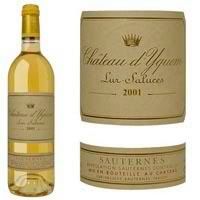Chartreuse - The Silent Green !

I'm into everything that can be consumed and collected with pleasure, and has a vintage extension to it. My biggest passion are the vintage Cognacs. Right behind them comes vintage Chartreuse. I love to find and taste bottles as old as 150 years. Chartreuse is a very unique liqueur with a unique taste and character and also a unique past. In 1605, Francois Hannibal d’Estrees, Marshal of the French King’s artillery, gave the Carthusian fathers at their monastery in Vauvert, near Paris, an already ancient manuscript bearing the title "Elixir of Long Life". This manuscript was sent to La Grande Chartreuse. At La Grande Chartreuse there was an apothecary, Brother Jerome Maubec, who served the medical needs of the monastery and the residents of the local area. Early in the 18th century, Brother Maubec undertook the task of unraveling the manuscript’s complex directions for compounding the "Elixir of Long Life." Brother Maubec died before completing this challenge but, on his deathbed, he passed what he had learned on to his successor, Brother Antoine. Brother Antoine completed the translation of the recipe in 1737 and, although it apparently did not prolong life, with 130 herbs and spices infused into a base of 71 percent wine alcohol, it did have many
curative powers. The monks became distillers of this medicinal elixir. Chartreuse—named for its green hue—has survived revolutions, landslides, and tangles with the French government, which twice attempted to appropriate the recipe. In 1810, Napoléon ordered that all secret medicinal recipes be delivered to the ministry of the interior, but the emperor returned the Chartreuse recipe to the monks without divulging its contents. In 1903, the monks temporarily fled to Spain with the recipe when the French government nationalized the distilling industry. Russian Tsar Nicolas II insisted that a bottle of Chartreuse always be on his table. Today, the Alpine herb liqueur is still made by Carthusian monks, whose tradition of silence prevents them from speaking of the secret ingredients. Three of the monks, who have been trained by their predecessors in the art of distilling Chartreuse, occasionally leave their cells for a short period of time and make the liqueurs. Each monk only knows a third of the recipe. They then return to the solitude of their cells. It is the labors of these three monks that provide the Carthusians the sustenance to pursue their quiet lives of meditation and prayer.
They just launched a premium retro product, the Chartreuse V.E.P. (Vieillissement Exceptionnellement Prolongé) which is made from those same ingredients as the traditional green liqueur, but extra-long aging makes it heady and herbaceous, with just a touch of sweetness. The bottle is a replica of the packaging that was used in 1840.


Labels: spirits










0 Comments:
Post a Comment
<< Home